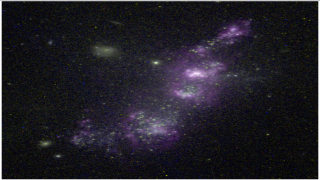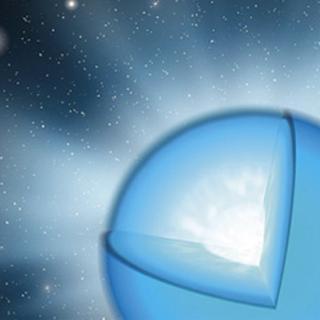Bibcode
Calvi, R.; Rodríguez Espinosa, J. M.; Mas-Hesse, J. M.; Chanchaiworawit, K.; Guzman, R.; Salvador-Solé, E.; Gallego, J.; Herrero, A.; Manrique, A.; Marín Franch, A.
Referencia bibliográfica
Monthly Notices of the Royal Astronomical Society
Fecha de publicación:
11
2019
Número de citas
15
Número de citas referidas
14
Descripción
The epoch corresponding to a redshift of z ̃ 6.5 is close to full re-ionization of the Universe, and early enough to provide an intriguing environment to observe the early stage of large-scale structure formation. It is also an epoch that can be used to verify the abundance of a large population of low luminosity star-forming galaxies that are deemed responsible for cosmic re-ionization. Here, we present the results of follow-up multi-object spectroscopy using OSIRIS at Gran Telescopio Canarias of 16 Ly α emitter (LAE) candidates discovered in the Subaru/XMM Newton Deep Survey. We have securely confirmed 10 LAEs with sufficient signal-to-noise ratio of the Ly α emission line. The inferred star formation rates of the confirmed LAEs are on the low side, within the range 0.9-4.7 M☉ yr-1. However, they show relatively high Ly α rest frame equivalent widths. Finally we have shown that the mechanical energy released by the star formation episodes in these galaxies is enough to create holes in the neutral hydrogen medium such that Lyman continuum photons can escape to the intergalactic medium, thus contributing to the re-ionization of the Universe.
Proyectos relacionados

Grupo de Estudios de Formación Estelar GEFE
El proyecto interno GEFE está enmarcado en el proyecto coordinado, ESTALLIDOS, financiado por el plan nacional desde el año 2001. El ultimo proyecto aprobado es ESTALLIDOS 6.0 (AYA2016- 79724-C4-2-P). En el proyecto GEFE trabajamos en base al caso científico del proyecto ESTALLIDOS 6.0. Los estallidos de formación estelar (Starbursts o SB) son
Casiana
Muñoz Tuñón

Propiedades Físicas y Evolución de Estrellas Masivas
Las estrellas masivas son objetos claves para la Astrofísica. Estas estrellas nacen con más de 8 masas solares, lo que las condena a morir como Supernovas. Durante su rápida evolución liberan, a través de fuertes vientos estelares, gran cantidad de material procesado en su núcleo y, en determinadas fases evolutivas, emiten gran cantidad de
Sergio
Simón Díaz